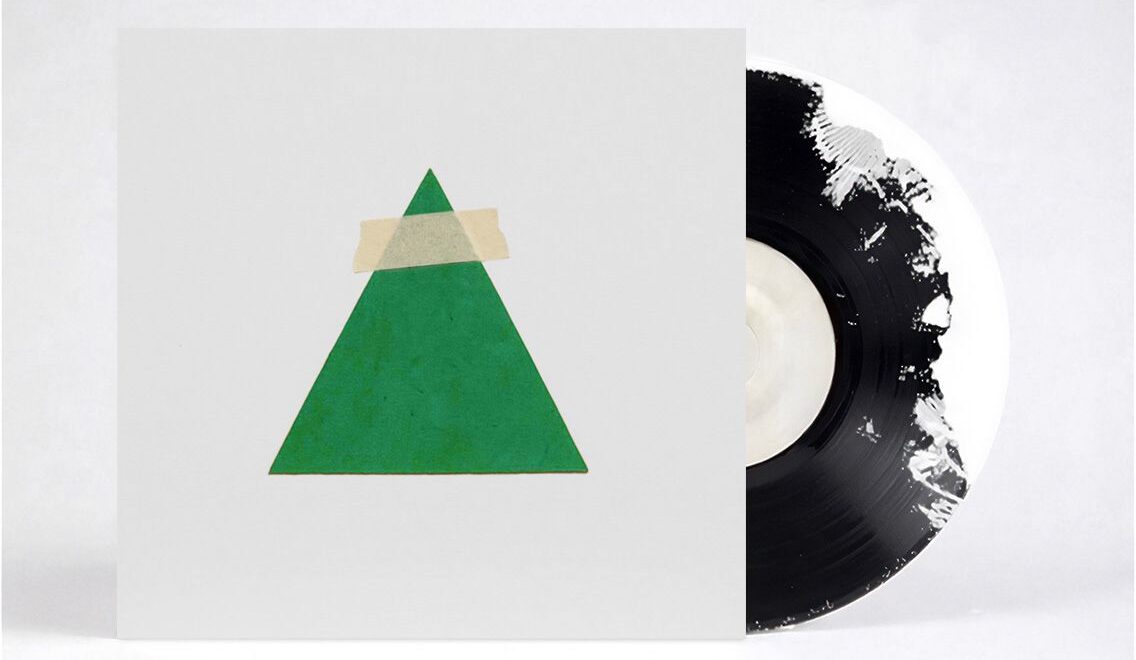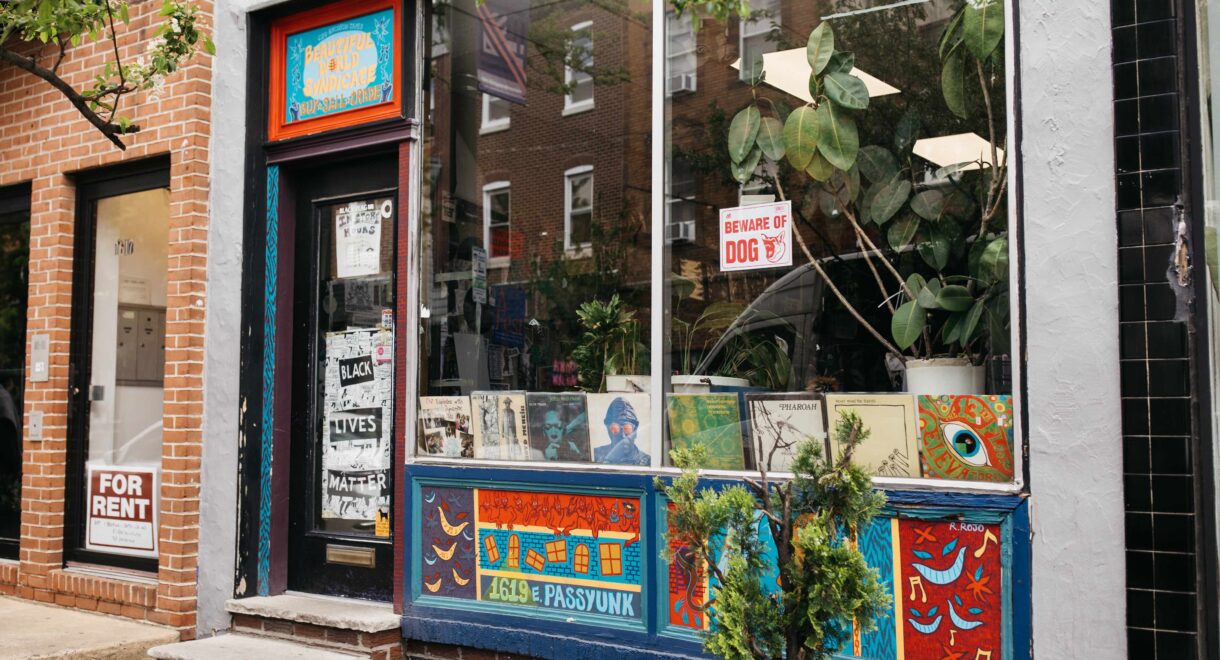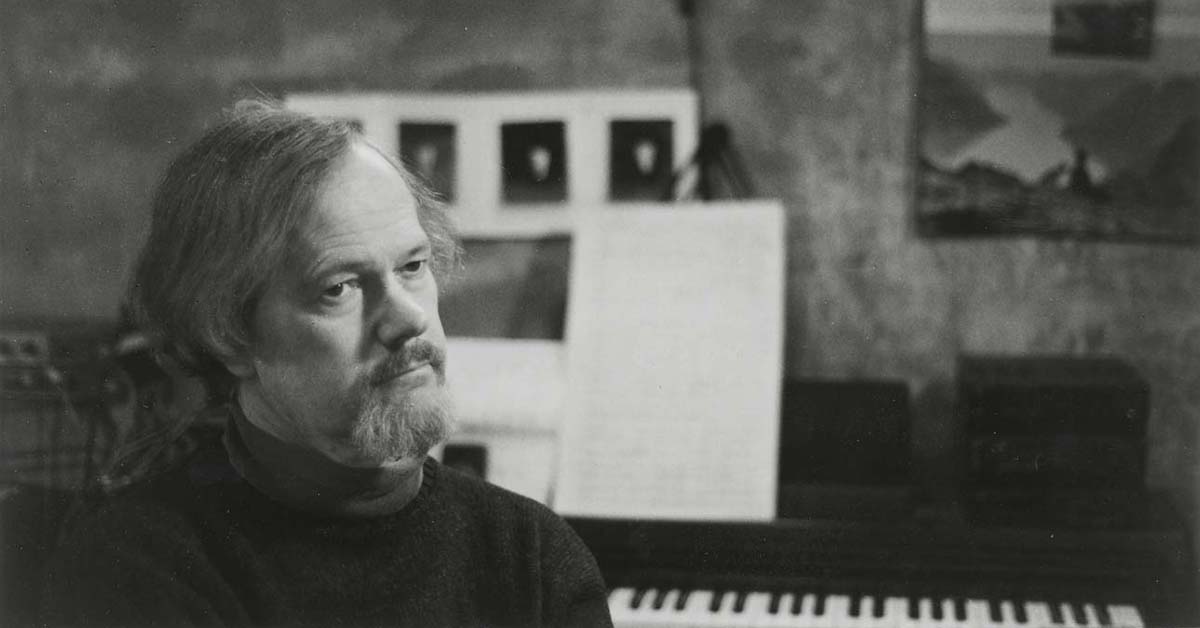Merry cosxmes to all those who celebrate! It’s that time of year again… That’s right — another cosxmes mix has been uploaded! In certain circles, “cosxmes” is the […]
Record Stores We Love: Kankyō Records (Tokyo)

One of the best ambient shops in the world, H. Takahashi’s Kankyō Records offers music for the living environment.
In 1978, electronic music pioneer Brian Eno released Music for Airports, the first of four seminal works in his genre-defining “Ambient” music series. In the liner notes, Eno described the concept behind this new music: “An ambience is defined as an atmosphere, or a surrounding influence: a tint. My intention is to produce original pieces ostensibly (but not exclusively) for particular times and situations with a view to building up a small but versatile catalogue of environmental music suited to a wide variety of moods and atmospheres.”
Inspired by Eno’s concept of “environmental music,” Kankyō Records is a shop in Tokyo specializing in ambient and electronic sounds intended for listening in the living environment. Offering a highly curated selection of vinyl, tapes, and CD’s, the shop organizes releases not by genre or style, but instead by various “time-place-action” environments including: Morning, Garden, Living Room, Work, Escape, Play, Sleep, etc. In doing so, the shop subtly encourages listeners to discover new ways of listening and engaging with music that “blend naturally with everyday life.”
Below, we asked Kankyō Records founder H. Takahashi a few questions over email to learn more about the concept behind the store, his background in architecture, the multi-sensory products that accompany the label’s releases, Japanese ambient artists, listening workshops, and more!
Hey Kankyō Records crew! Thanks for agreeing to this interview. We’ve been big fans from afar here in Los Angeles. To get started, what is the concept behind Kankyō Records? Were there any specific movements or ideas that influenced you to open a shop with this particular approach?
Kankyō Records was launched in 2020 as a shop that focuses on the relationship between environment and music—curating sounds that blend naturally into everyday life. Rather than chasing trends or sticking to genres, we emphasize how and where music is listened to. One major influence was Japan’s 1980s “environmental music” movement, particularly artists like Hiroshi Yoshimura and Yoshio Ojima, as well as ambient pioneers like Brian Eno’s Music for Airports. These works taught us the idea that music doesn’t always have to be the main focus—it can serve as an element that defines a space.

I love how the shop selections are organized by different environments. That’s something I haven’t seen before. Can you share some background on this idea and select a few of your personal favorite “environments” to listen to music and one album for each?
Genre-based categorization tends to shift attention to what something is, rather than how it’s experienced. At Kankyō Records, we aim to offer a more immersive connection between sound and space by encouraging people to choose music based on their listening environment. For example:
Morning / Bedroom:
Living Room / While Working:
Bathroom / Zoning Out:
Daytime / Garden:
Before Sleep / Drowsy Time:
All of the above records are available to purchase online at Kankyō Records.

“At Kankyō Records, we aim to offer a more immersive connection between sound and space by encouraging people to choose music based on their listening environment.”

The space is also the home of your design firm H.Architecture. How do these two activities inform each other? You’ve mentioned in other interviews that you see a relationship between certain records, like Brian Eno’s Music for Airports, with architecture.
Architecture and music share a common viewpoint: how to design space. Works like Brian Eno’s ambient pieces define space through sound, which feels very close to architecture. When designing with H.Architecture, we even consider acoustics and what kind of sound flows through a space—this mindset also informs how we shaped the physical space of Kankyō Records. Conversely, I think the way we curate music at the shop is also influenced by architectural thinking—its structure, atmosphere, and silence.
Kankyō Records also launched its own label in 2023. Most of the releases are defined by a specific concept and often accompanied with additional space-altering products like incense or essential oils. I love this idea that other elements/products can interact and “support” the appreciation of music. Can you share some releases and products you’ve created to accompany the listening experience?
Our label aims to deliver more than just music—we want to create an entire spatial experience. For example:

ind_fris – This side to that side, That side to this side: comes with an air freshener made for car interiors to enhance immersive listening during a drive.

V.A. – Vaporize: includes a specially developed löyly oil for private saunas, with four ambient tracks composed specifically for sauna listening.
We’d like to continue exploring multi-sensory experiences that deepen how music is felt through all five senses.
I’m also a big fan of Kankyo Records' design! Your collaborator Yudai Osawa is the lead designer on all things Kankyo Records. Can you talk about your relationship working together and how the Kankyo Records’ design aesthetic was conceived?
Yudai Osawa is a longtime friend, and we built the visual identity of Kankyo Records together from the start. We’ve also worked together in music groups like Unknown Me and Atoris, so we share similar aesthetics and musical sensibilities. Every two weeks, we meet at the shop to plan what to make next. In that sense, Yudai is an integral part of Kankyo Records.
The store selection is mainly focused on ambient music. Of course, music from the ‘80s Kankyo Ongaku ambient scene has become very popular worldwide in recent years. How have you seen the ambient scene in Japan develop over the past decade and especially in the years since the pandemic?
Ambient music has definitely gained broader acceptance over the past ten years. Since the pandemic, people have reevaluated their time at home, and ambient music—which blends into daily life—has been receiving more attention. At the same time, reissues and rediscoveries of older works have increased, and younger artists are actively exploring this genre now.
Who are some of your favorite local ambient artists that are currently coming up or may be a bit more unknown outside of Japan?
Yes, here are a few I’d like to highlight:
I noticed many titles in the shop from American ambient producers alongside Japanese artists. I saw a similar question in an interview with Chihei Hatakayama, but I’m wondering if you see any prominent differences between American and Japanese ambient music?
This is just my personal impression, but Japanese ambient often emphasizes “ma” (space) and silence, with a unique sense of distance from nature and how it uses empty space. In contrast, American ambient tends to explore more experimental layering and texture. Both are beautiful in their own way, and it’s fascinating how geography and culture influence sound.
A few years ago, you conducted a “Music Listening Meetup” at your listening space “Home Listening Room” where participants shared new ways of listening and engaging with music. I’m curious what you learned from that experience and if you can share some of the interesting interactions from this event?
The “Home Listening Room” was an experiment in rethinking the act of listening to music. A quiet shared space where participants listened together created a kind of communication that went beyond words. One thing that stood out was how the same piece of music could evoke completely different emotions depending on one’s listening posture or context. There was a unique sense of openness and emotional connection among the group, which made me realize how interesting this form of play really is.

Lastly, what’s coming up next for Kankyo Records? Any ideas or collaborations that you’d like to manifest into the universe with this feature?
We’re exploring projects that expand the idea of “environment” even further—experiences that combine music with scent, architecture, light, graphics, food, and more. We’re also developing experimental ideas like festivals or a mobile listening room. If we can bring more people experiences that help them “tune” their environment through music, we’d be very happy.
Website: https://kankyorecords.com/
Instagram: https://www.instagram.com/kankyo_records/










